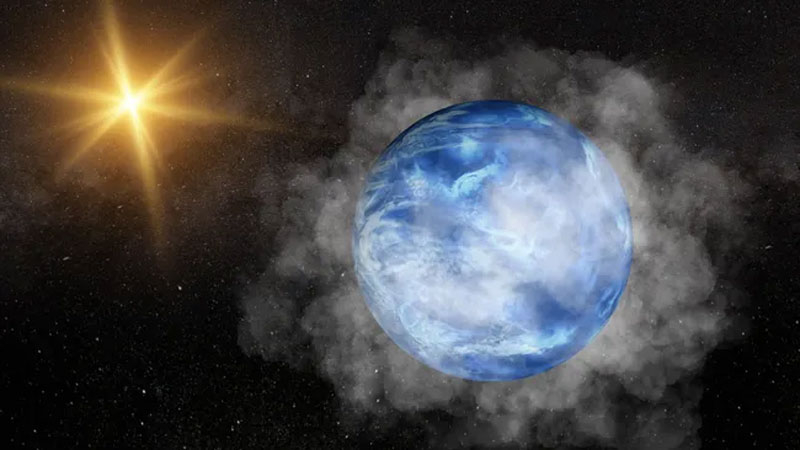Located just 100 light years from Earth, the world GJ 9827 d surprised scientists. Its atmosphere consists of more than 30% water vapor. Scientists have never come across such exoplanets, the atmosphere of which would be saturated with “heavy” molecules. What’s sad is that biological life known to us on Earth will not be able to survive in such conditions – it is too hot there for that.

Image source: Robert Lea / Canva / space.com
Exoplanet GJ 9827 d was discovered in 2017 by the Kepler space telescope. It is located only 8.4 million km from its star – this is 6% of the distance from the Earth to the Sun. The exoplanet is twice the size of Earth and three times more massive. Such exoplanets are called sub-Neptunes. In this case, it is a warm sub-Neptune. The year on GJ 9827 d lasts a little more than six Earth days. Two more exoplanets were discovered in the system, but this one turned out to be the most promising for the close attention of scientists.
Subsequent observations of GJ 9827 d in 2023 using the Hubble Telescope revealed the first hints of the presence of water vapor in the atmosphere, which immediately increased interest in the object. The use of James Webb spectral instruments made it possible to study in more detail the composition of the gas shell surrounding it. This became possible during the exoplanet’s passage across the face of its parent star, when the latter’s light at certain wavelengths was absorbed in the atmosphere of GJ 9827 d. The discovery was the discovery of not just water molecules in the atmosphere of the exoplanet – it was literally drowning in water vapor, the percentage of which scientists estimated was more than 31%.
«
The team believes that many more worlds like GJ 9827 d remain to be discovered, suggesting that steam planets and water worlds may be very common.